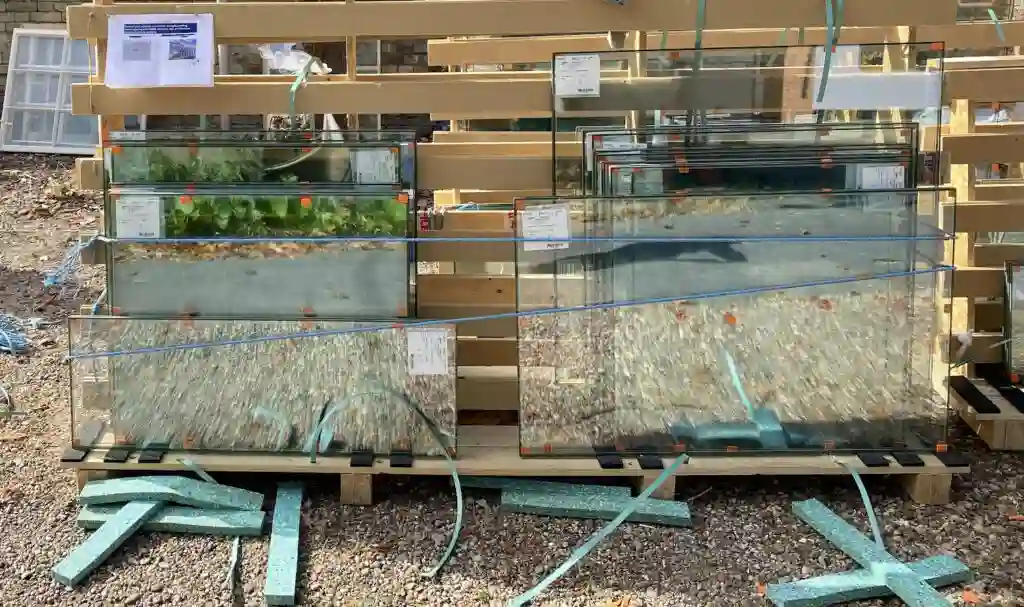Using vacuum double glazing is a great way to save money on your home’s energy bills. This is because vacuum double glazing is made with special insulation materials that allow heat to be absorbed and then re-radiated, so you do not have to use as much heating or cooling as you would with ordinary windows. It can also be a good option for homes with older or smaller windows.
Pilkington Spacia
Having a vacuum double glazing costs can make your house more comfortable, and save you money on your heating bills. This type of window is also very energy efficient, keeping out the cold in the winter, and keeping the heat in during the summer. It’s also very good at reducing outside noise. The edges are welded for an airtight seal, and the micro-spacers are transparent and less than one millimetre in diameter.
It’s also the first commercially available vacuum glazing. Designed for domestic refurbishment applications, Pilkington Spacia is thin enough to be used on existing frames, and it’s suitable for listed buildings and historic buildings. It has a low failure rate compared to standard double glazing. It’s also very slim, so it will not detract from the look of your property. It’s a very practical solution for modern requirements. The vacuum insulation provides the same thermal properties as triple glazing, but is much lighter. This means you can retrofit it to a house, and it’ll save you on your heating bills.
Vitro Glass
Whether you are looking for an energy efficient glass that meets the 2018 IECC requirements or simply need a low-e glazing, Vitro Glass has what you need. Its range of low-E glasses offers both superior solar control performance and energy efficiency. It can be used in both simple monolithic lites and double-glazed IGU. It is available in a variety of sizes, from 12×12 inches to 58×96 inches.
For a warm, ultra-neutral aesthetic, Optigray(r) glass is the ideal substrate for Solarban(r) high-performance low-e coatings. It is specially formulated to maximize the performance of these coatings and produce a warm, luminous appearance. It can be combined with subtly reflective Vistacool(r) coatings. Vitro Glass also offers Solarblue(r) glass. This sparkling, light sky-blue glass is designed to provide exceptional clarity. It has a visible light transmittance of 20%. It is part of Vitro Glass’ nautically-inspired collection. It is a member of the exclusive Vitro Certified(tm) Network.
Guardian Glass
Architects should consider Guardian Glass’s innovative vacuum insulated glass (VIG) technology. The vacuum in the gap between two panes of glass helps to minimize the loss of heat from conduction and convection. This new window technology is thinner and lighter than standard double-glazed windows.
The insulating effect is achieved by a low-emissivity coating, which reduces the transfer of radiant heat. Vacuum sealed windows costs is applied to the outside of the glass using a large magnetron sputter vacuum deposition machine. The result is a thin layer that only measures 3/16 of an inch thick. The insulating effect is also aided by a reflective coating that serves to reflect heat back where it came from. This technology is perfect for new or retrofit applications. In addition to its insulating properties, the hybrid VIG unit has excellent soundproofing properties. This technology is designed to be installed into existing window frames within minutes. The thin construction of this technology makes it ideal for renovation projects. It can also be used in historic buildings.
VIG Technologies
Whether or not you’re considering replacing your existing IGUs with vacuum double glazing, you’ll need to understand the costs. Currently, the production cost of VIG is two to three times higher than that of an Argon filled IGU. However, it is possible that you can save money. In addition, it can reduce your energy bills. Because it uses less gas between panes, it will be more energy efficient. It also provides a significant increase in seal redundancy. It can even improve reliability.
A key component in VIG is the spacer, which serves as a thermal bridge between glass panes. It is typically made from high strength metal. It can range in size from 0.3 to 0.5 mm in diameter. The primary stress issue is bending of the unsupported regions of the glass. This can result in bowing and seal failure. If the spacer is not well defined in its geometric parameters, it can lead to a reduction in its overall mechanical strength.
Final Thought
In vacuum double glazing, the gas between the glass panes is eliminated. This allows a reduced cavity size and therefore, a more traditional-looking window. This can greatly improve the performance of old windows.


